The New Reality of Disaster Recovery
If the last few years have taught Canadian businesses anything, it’s that downtime isn’t just inconvenient—it’s expensive. The average cost of unplanned downtime in Canada now ranges from $10,000 to $25,000 per hour, and for critical sectors like healthcare or finance, the losses can climb even higher. In 2025, with hybrid work, real-time data, and always-on customer expectations, organizations can no longer afford to wait hours—or even minutes—for recovery.
That’s why the conversation has shifted. It’s no longer about backup; it’s about resilience. The goal isn’t just to store data safely but to keep operations running smoothly, no matter what happens. And increasingly, that resilience lives in the cloud.
For Canadian organizations, local cloud providers like Server Cloud Canada (SCC) are redefining disaster recovery in the cloud. By keeping data within national borders and providing low-latency, high-availability environments, SCC ensures both compliance and confidence—a true foundation for continuity.
Cyber Resilience First: The Ransomware Mandate
Ransomware has evolved from a data-encryption nuisance into a full-blown business crisis. Modern attacks don’t just lock files—they seek out and destroy backups too, aiming to eliminate any hope of recovery. In 2025, every DR strategy must start with the assumption that you’ll be targeted—and plan accordingly.
Immutability: The New Non-Negotiable
Immutable backups—data that cannot be altered or deleted, even by administrators—have become the gold standard. Think of them as your “digital vault”: no matter what happens in production, your clean, untouchable copy remains safe. This builds on the classic 3-2-1 rule (three copies, two types of media, one offsite) by adding one more critical element: one immutable copy.
At Server Cloud Canada, immutability is built into the architecture. Backups are stored in secure, isolated environments that remain tamper-proof and retention-controlled, ensuring a guaranteed recovery point even after a ransomware event.
Isolation Matters: Air-Gapped and Logical Separation
The best DR strategies also separate backup environments from live networks. Whether it’s a physical air gap or logical isolation (via segmented virtual networks), this separation prevents malicious software from spreading. SCC implements these protections natively within its Canadian cloud—without compromising speed or recovery times.
The Automation Advantage: Speed and Precision
In 2025, downtime isn’t measured in hours—it’s measured in seconds. Businesses now demand near-instant recovery time objectives (RTOs) and minimal data loss (RPOs). The only way to meet those expectations is through automation and intelligent orchestration.
AI and Machine Learning to the Rescue
Artificial intelligence is transforming disaster recovery from a reactive process into a predictive one.
-
Predictive Analytics monitor system logs to identify early warning signs of hardware failure or network degradation.
-
Anomaly Detection uses machine learning to recognize irregular access patterns or data deletions that might signal ransomware in progress—allowing defenses to engage automatically.
-
Intelligent Prioritization ensures that business-critical applications like ERP or CRM systems are restored first, reducing disruption to your core operations.
Infrastructure as Code (IaC): Instant Failover
Infrastructure as Code (IaC) is another major step forward. Using tools like Terraform or Ansible, SCC can recreate entire environments in minutes. Every configuration, security rule, and application dependency is codified—meaning failover systems can spin up instantly and reliably. Automation doesn’t just speed recovery; it makes it predictable.
Choosing the Right Cloud DR Model
Every business is different. The right disaster recovery approach depends on your infrastructure, risk tolerance, and compliance requirements. Here are three models to consider in 2025:
1. Disaster Recovery as a Service (DRaaS)
DRaaS lets you outsource the heavy lifting—replication, monitoring, testing, and failover—to a specialized provider like Server Cloud Canada. The benefits? Predictable monthly costs, expert oversight, and a stress-free recovery process. SCC’s DRaaS offering is fully managed in Canadian data centers, ensuring data sovereignty and low-latency performance.
2. The Hybrid Approach
Many organizations prefer a mix of on-premise and cloud solutions. Latency-sensitive or compliance-heavy workloads stay local, while everything else replicates securely to the cloud. This approach is ideal for industries like finance, education, and healthcare, where both performance and compliance matter. SCC’s hybrid models provide the flexibility to keep what you need local—without losing cloud resilience.
3. Multi-Cloud Resilience
For enterprises that rely on multiple cloud providers, multi-cloud DR creates an extra layer of protection. If one provider experiences an outage, your DR environment in another cloud (for example, production on AWS and DR on SCC) ensures continuity. SCC’s interoperability makes it easy to integrate into any multi-cloud strategy.
Testing, Governance, and Continuous Verification
Even the best DR plan is only as strong as its last test. Yet most organizations still rely on manual, once-a-year tests—an approach that’s no longer acceptable in 2025.
Automated, Non-Disruptive Testing
Modern DR platforms enable automated, non-intrusive testing—verifying readiness quarterly, monthly, or even continuously. SCC’s testing tools simulate real-world failovers without impacting live operations, ensuring that your RTO and RPO targets are always met.
Granular Recovery Options
True flexibility means being able to restore exactly what’s needed: a single file, a virtual machine, or an entire data center. SCC’s backup systems provide that level of precision, reducing downtime and restoring confidence fast.
Governance and Compliance in the Canadian Context
Canadian privacy and data protection laws, including PIPEDA and provincial regulations, require that sensitive information stay within Canada. With Server Cloud Canada, all data is stored in geographically redundant, Canadian-only data centers, keeping you fully compliant while ensuring data sovereignty.
The Future: Toward Zero-Downtime IT
The next frontier in disaster recovery isn’t just faster failover—it’s self-healing IT. We’re moving toward systems that can detect, isolate, and recover from incidents automatically, often before users notice a problem.
At the same time, sustainability is taking center stage. SCC’s data centers use energy-efficient infrastructure and renewable power, supporting both operational resilience and environmental responsibility.
Building a Resilient Future
In 2025, disaster recovery isn’t a “nice to have”—it’s a core business strategy. The winning formula combines immutability, automation, and intelligent orchestration.
If your organization hasn’t reviewed its RTO/RPO targets recently, now’s the time. Server Cloud Canada can help you assess your current posture, test your backups, and build a modern, cyber-resilient recovery plan that’s ready for anything.
Contact Server Cloud Canada today to schedule your DR assessment and start building a truly resilient future.


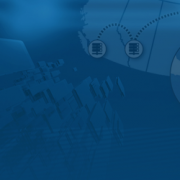
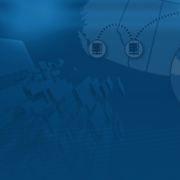

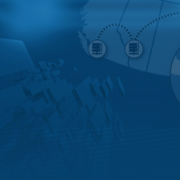
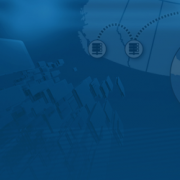

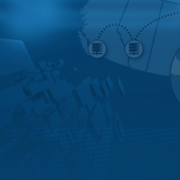






Leave a Reply
Want to join the discussion?Feel free to contribute!